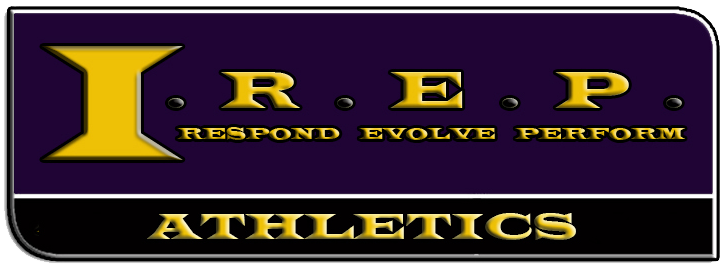Transition Area Mastery
Place everything you’ll need for the bike and run segments in the order you will use them. Position your bike so that it faces the exit, saving you from making unnecessary turns. Your helmet should be upside down on your handlebars with the straps out to the sides, and your sunglasses inside, ready to put on. Cycling shoes can be already clipped onto your bike pedals or beside your bike, depending on your preference and skill level.
If a clothing change is necessary, lay out your apparel so that it can be donned quickly. Triathlon suits are designed to be worn throughout all segments for this reason. If regulations and weather allow, wearing your race number beneath your wetsuit can eliminate a step during the transition from swim to bike.
Use a brightly colored towel or a unique mat to mark your spot. You may want to look for natural landmarks near your transition spot or have a tall, bright object, like a balloon, to serve as a marker.
Pare down your accessories to the basic necessities. Rather than wearing gloves for the bike section, which can be time-consuming to put on when damp from the swim, train without them to get accustomed to riding bare-handed.
Pre-open any food items to eliminate fumbles, and have your hydration bottles ready to grab with ease.
Consider the benefits of a quick-closure system to save time for cycling shoes. Your running shoes should be open and ready to slip on with speed laces or elastic laces. Place them in front of your space to easily step into as you leave your bike.
Run through your setup and transitions several times before race day. It’s important to become familiar with the sequence of actions you’ll need to accomplish as you move from the swim to the bike to the run.
Take the time to visit the transition area before the race, noting entry and exit points, distances, and any peculiarities that could impact your transition plan.
Executing mock transitions during training sessions helps build muscle memory. These time trials should simulate race conditions as closely as possible, including arriving out of breath as you would from the swim to mimic real race circumstances.
Transition One (T1) From Swim to Bike
Wetsuit removal is often perceived as one of the more challenging aspects of T1. Enhanced practice regimes focusing on swift wetsuit removal can significantly reduce transition time. Triathletes utilize a non-petroleum lubricant at the wrists and ankles, which facilitates quick removal by minimizing friction between the suit and the skin. Try to start removing your wetsuit as you approach the transition. Peel it off your upper body and down to your waist as you run.
Place your helmet in an easy-to-grab position with the straps outward and open, ensuring you can secure it onto your head without any hindrance. Sunglasses should be readily accessible, placed either in the helmet or in a dedicated spot where you can grab them swiftly.
Placing your helmet within arm’s reach ensures it is the first thing you grab upon arriving at your setup. After securing your helmet, you can move directly to your sunglasses, cycling shoes, and any other necessary gear.
Pre-open energy gels and position them so that you can consume them swiftly. Decide whether you will carry a bottle from the transition area or utilize the hydration offered on the bike course.
As you enter the transition area, focus on executing the predetermined order of actions: remove your wetsuit (if worn), don your helmet, slip into your bike shoes (if they’re not already on the bike), and ensure that you are ready to mount your bike with all necessary equipment checked and secured.
Transition Two (T2) From Bike to Run
Ensure that your race number is attached to a belt or already pinned to your top, ready to be displayed as the rules mandate. A race belt is a favorable option as it can be quickly clipped on around your waist, making it an indispensable item for expert triathletes focusing on speedy transitions.
Your first step is to securely rack your bike in the designated area. As per triathlon rules, racking typically involves placing the bike by the saddle or handlebars on a provided rack. Ensure smooth operation by familiarizing yourself with the racking system in use at your specific event.
 Remove your feet from your cycling shoes as you approach the dismount line (if you haven’t already done so while cycling), and once the bike is racked, immediately focus on changing into your running shoes. Fine-tuning your technique during training will translate into a seamless process on race day.
Remove your feet from your cycling shoes as you approach the dismount line (if you haven’t already done so while cycling), and once the bike is racked, immediately focus on changing into your running shoes. Fine-tuning your technique during training will translate into a seamless process on race day.
If you need to change into a different top, make it easy to put on, such as with pre-unfastened snaps or zippers.
Place nutrition products, like gels or chews, in an easily accessible location for quick consumption. Your hydration strategy should be pre-planned, knowing whether you’ll carry hydration with you or utilize the aid stations on the run course.
Start to disengage mentally from the bike segment and prepare your body for the different muscle engagement required for running. Lower your cadence and stretch, if necessary, to make the transition smoother.
As your feet find their way into your running shoes and your race number is secured, swiftly gather any remaining basic necessities, like a cap or nutrition, and proceed to the run course. Keep your movements compact and your focus sharp during this critical transition.
Common Mistakes to Avoid
A cluttered transition area can lead to confusion and slower transition times. Some athletes make the mistake of bringing too many items, thinking they may need them during the race. To avoid this, only bring along the essentials—items you are sure to use during the race.
Giving short shrift to transition practice is a common oversight. Transitions should be rehearsed repeatedly to ensure they become almost automatic on race day.
Leaving your gear in the wrong part of the transition area can throw off your race. Make sure your setup is in the designated spot and organize your items in the order you will use them.
Forgetting to precondition your equipment for immediate use can be time-consuming. Ensure all gear is prepared and ready for rapid use.
Arriving at transitions without a clear progression of steps in mind often results in athletes reacting slower or getting frazzled. Understand the sequence of events that you need to perform during each transition and rehearse it mentally as well as physically.
A lapse in nutrition planning can cause an athlete to falter in later stages of the race. Quick-access nutrition should be included in your transition setup. Fumbling with wrappers or forgetting to take nutrition during transitions can lead to energy deficits.
Transition Area Etiquette
Every athlete is assigned a specific location in the transition area, typically marked by a rack to place one’s bike. Participants must contain their gear within their allocated space without encroaching on another’s area. Spreading out can create unnecessary obstacles and potentially delay or disrupt fellow competitors.
The transition area should be navigated with awareness and consideration for fellow triathletes. Moving haphazardly can lead to collisions or interfere with others’ transitions. It is important to be mindful and courteous when entering and exiting the transition area.
Keep the noise level to a minimum. Loud conversations or music can distract others who are focusing on their race preparation or transitioning between events. Use a calm and composed approach, which contributes to an environment of concentration and helps reduce stress for all competitors.
If an athlete encounters an issue, it’s important to remain sportsmanlike. Offering a quick word of encouragement or a minor assist, such as pointing out a dropped item, without breaking the rules of the competition, fosters a supportive atmosphere.
Stick to the designated flow of traffic to prevent running into others and affecting both your progress and that of other athletes.
Transition area specifics can vary by event, so heeding pre-race briefings for rules and instructions is necessary. Officials are present to oversee and maintain order, and their directions should be followed attentively.
Once you have completed your race, it is courteous to clear your gear from the transition area with promptness. This act of consideration aids in preventing congestion and allows for a smoother experience for those who are still competing.
